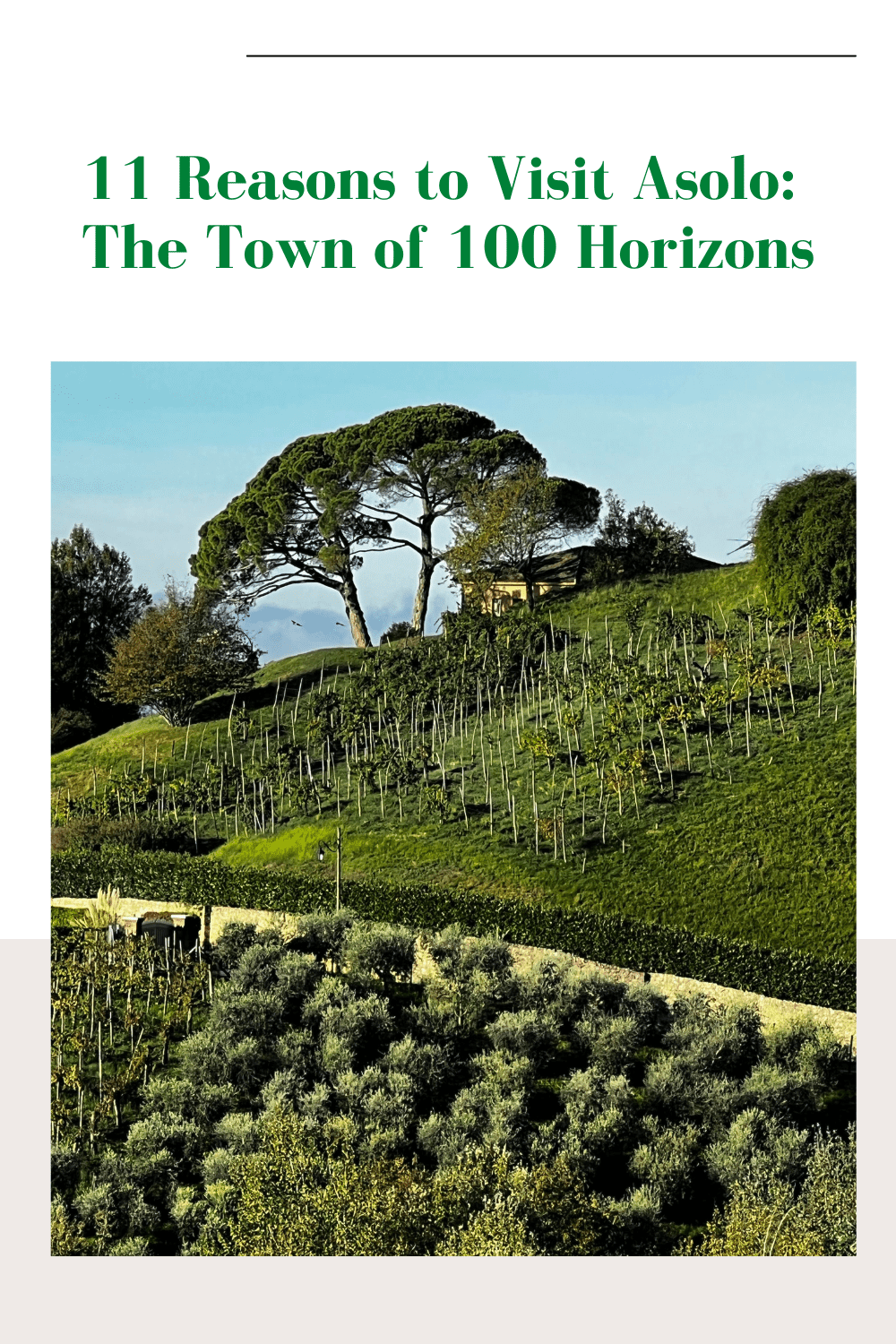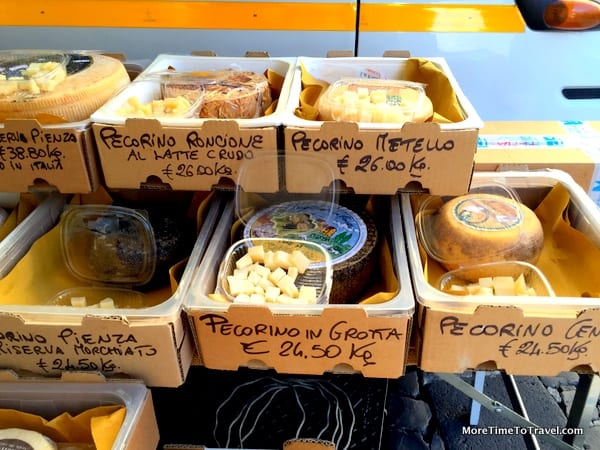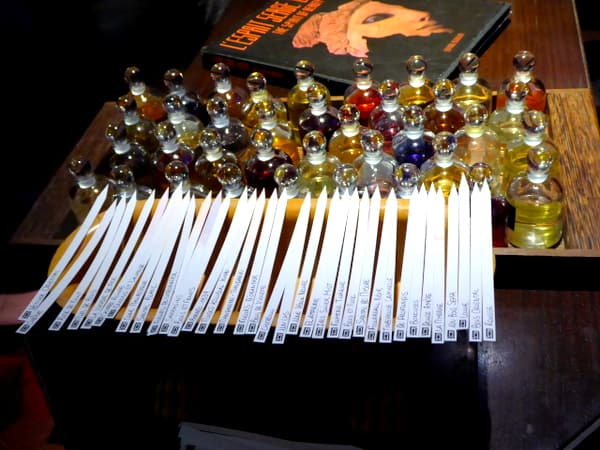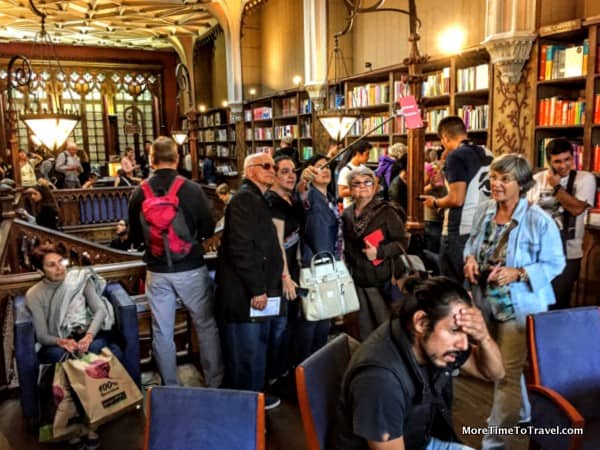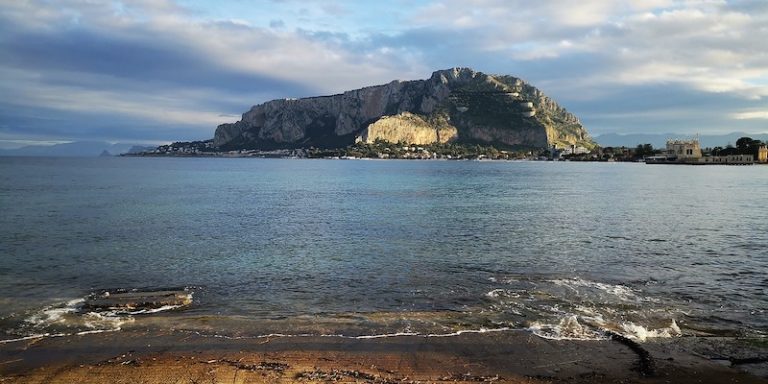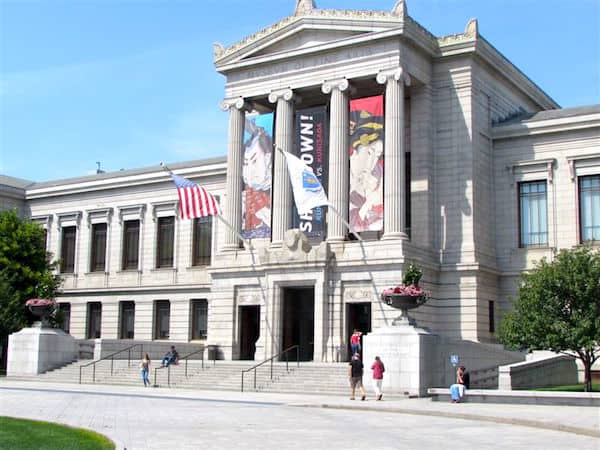11 Reasons to Visit Asolo Italy: Bubbles and Beyond
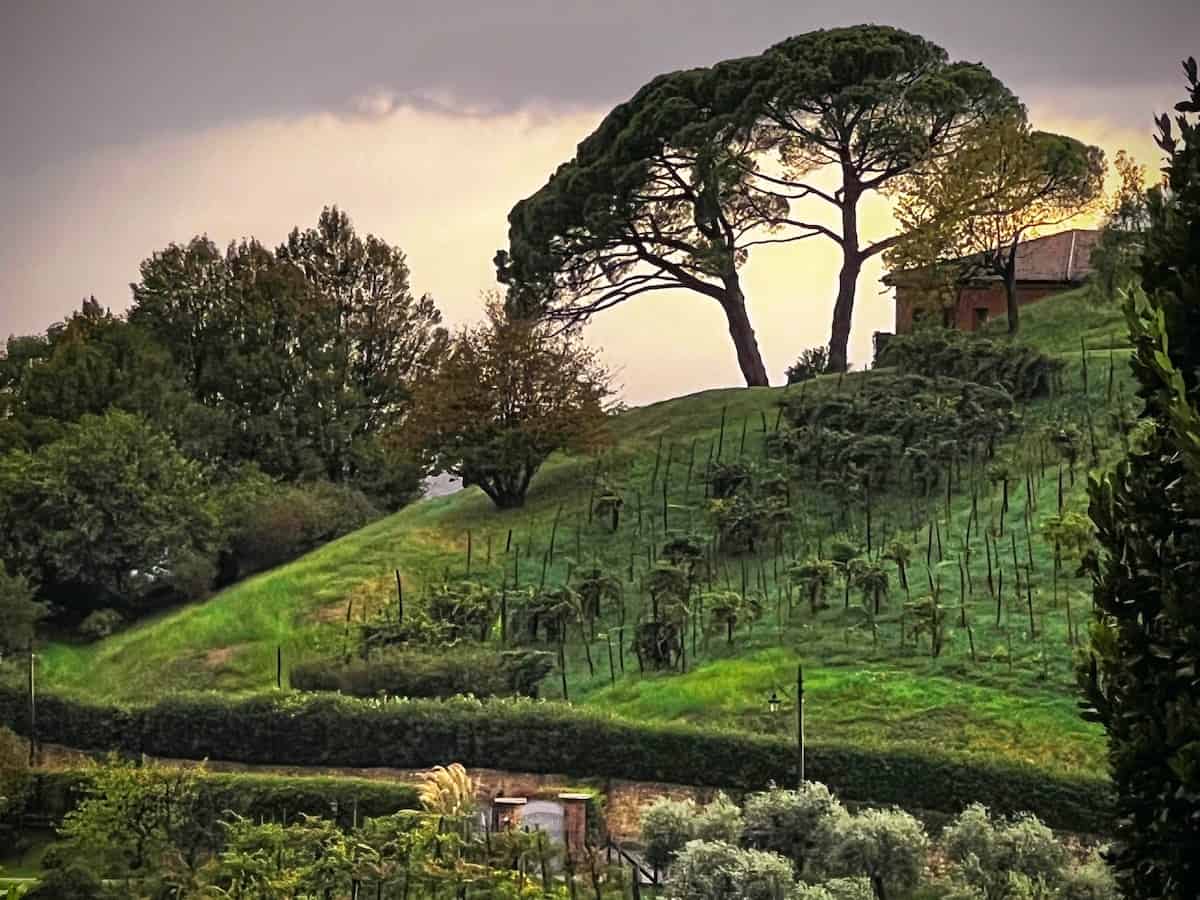
The charming hamlet of Asolo, in the province of Treviso, Italy, is only about 50 miles northwest of Venice, approximately one hour away by car.
Although there is only one Venice, a day trip (or longer) to this tiny medieval town is well worth visiting for reasons of its own.
Asolo has been designated one of the most beautiful borghi of Italy (I Borghi più belli d’Italia). Surrounded by centuries-old walls, stone gates, villas, and ruins, the town offers breathtaking landscape views.
Generations of artists, writers, poets, and intellectuals made Asolo their home, immersing themselves in the town’s beauty and rich history—including English poet Robert Browning, Violinist Wilma Neruda, and English travel writer and adventurer Freya Stark.
Poet Giosue Carducci, the first Italian to win the Nobel Prize in Literature, described it as the “town with a hundred horizons.”
It has also been called the “Pearl of the Province of Treviso.” Asolo was also named one of 23 Italian cities in the running for the 2024 European Capital of Culture.
You might ask why anyone would choose to leave Venice, one of the most alluring tourist destinations in the world, and head to Asolo. Whether you love art, history, architecture, photography or wine, it’s a lovely place to escape the hordes of tourists in large cities.
Reasons to Visit Asolo Italy
1- Soak in the views, of course
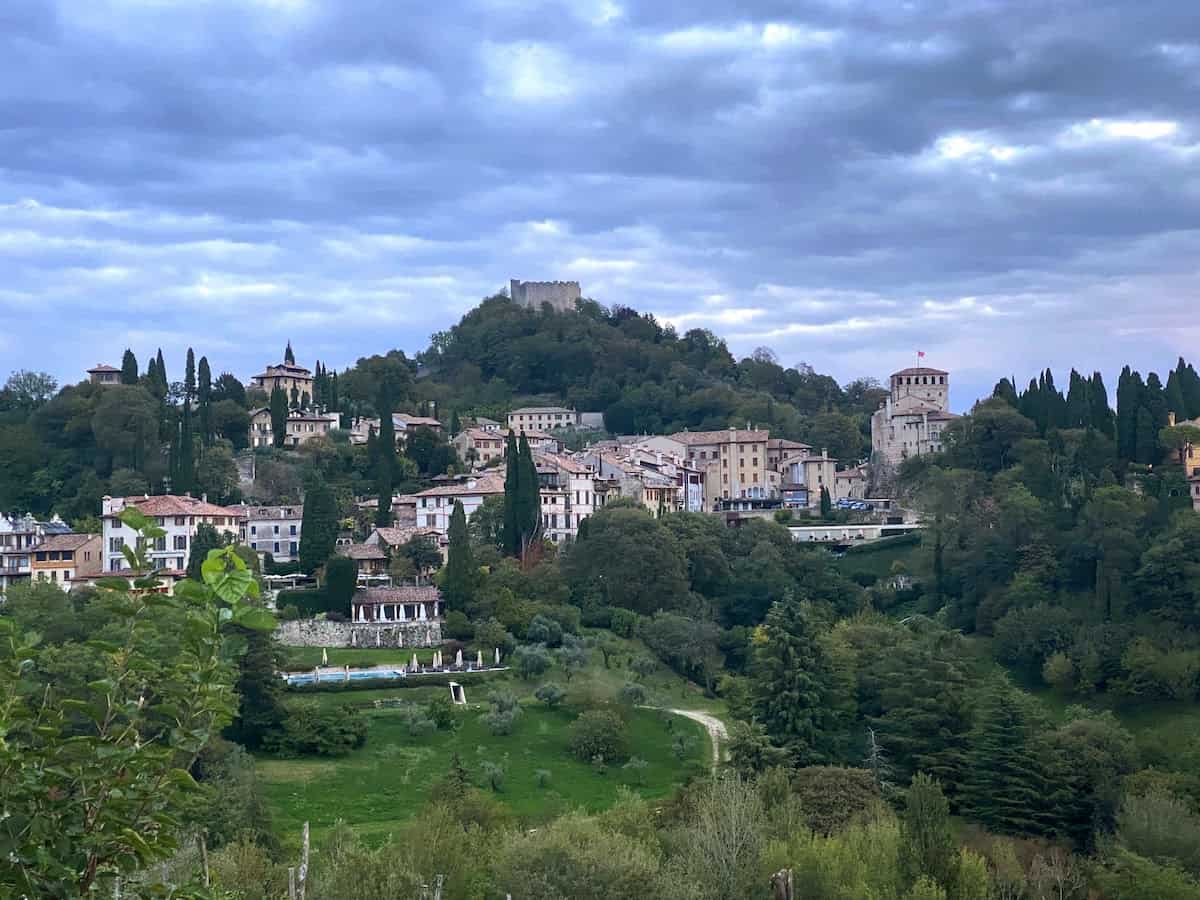
You don’t necessarily have to be a photo bug to appreciate the amazing views of the Venetian Prealp mountains (including Monte Grappa) and the sprawling valleys below, which can be seen from a number of places in the town. On a clear day, it’s possible to see Venice across the Lagoon.
The area offers abundant opportunities for walking, hiking, and exploring outdoors.
2- Relax near Piazza Garibaldi
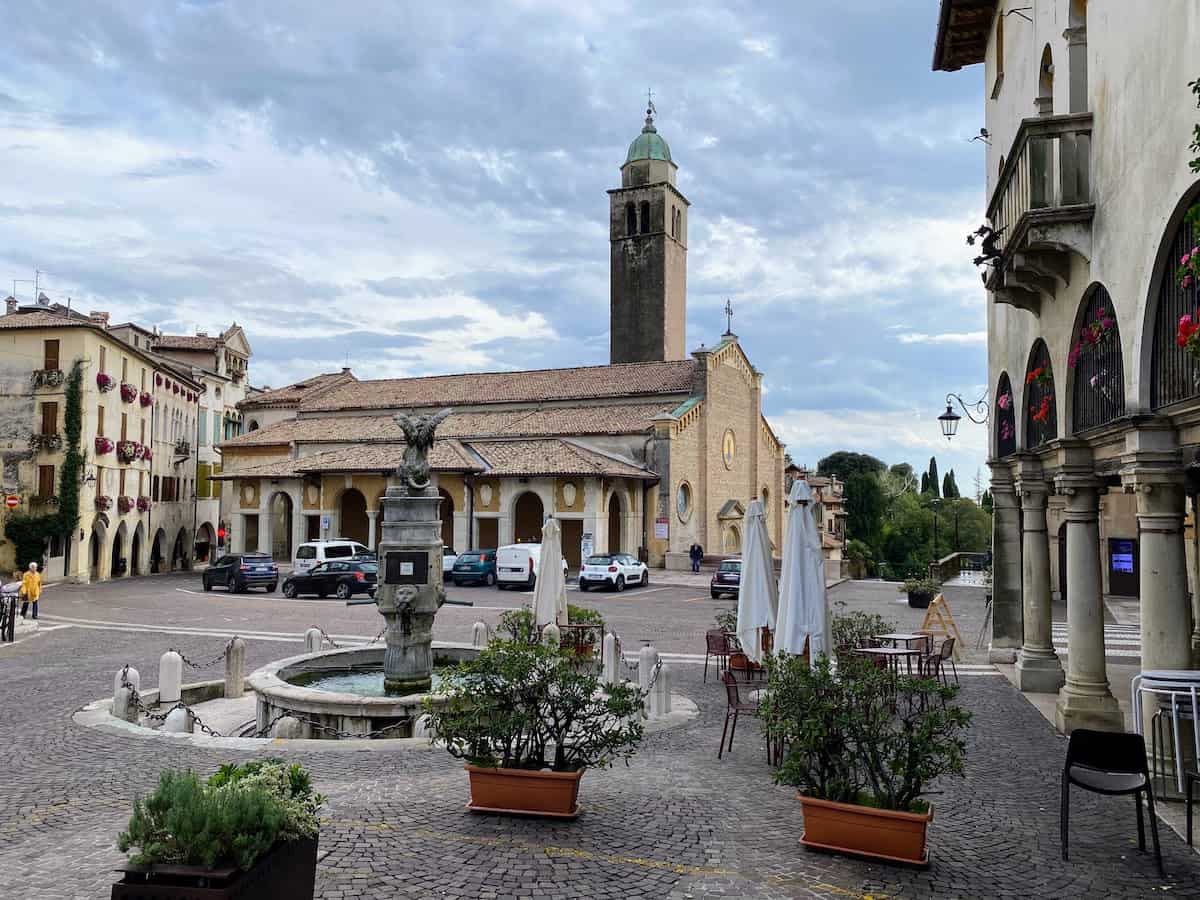
In the compact, very walkable downtown area, narrow streets and alleys lead to Piazza Garibaldi, with shops and eateries nearby.
Piazza Garibaldi is really the heart of Asolo. The name of the 16th-century fountain at the center, Fontana Maggiore, is probably a remnant of when the piazza itself was called Piazza Maggiore. Quite small and often surrounded by cars and bikes, it’s unlike many other Italian piazzas that serve as virtual living rooms for the towns.
Take a front-row seat outdoors at Caffe Centrale for coffee, gelato, or aperitivi with a Rosso cocktail to soak in views of the fountain (that has a lion on top crafted by a Venetian sculptor) and much of the historic architecture of the town. The cafe has been a meeting point for artists and intellectuals since 1700.
The Palazzo Beltramini now houses Asolo’s Town Hall; the Palazzo della Ragione, its civic museum. The town’s frescoed medieval cathedral was renovated during the 18th century.
3- Tour Villa Freya
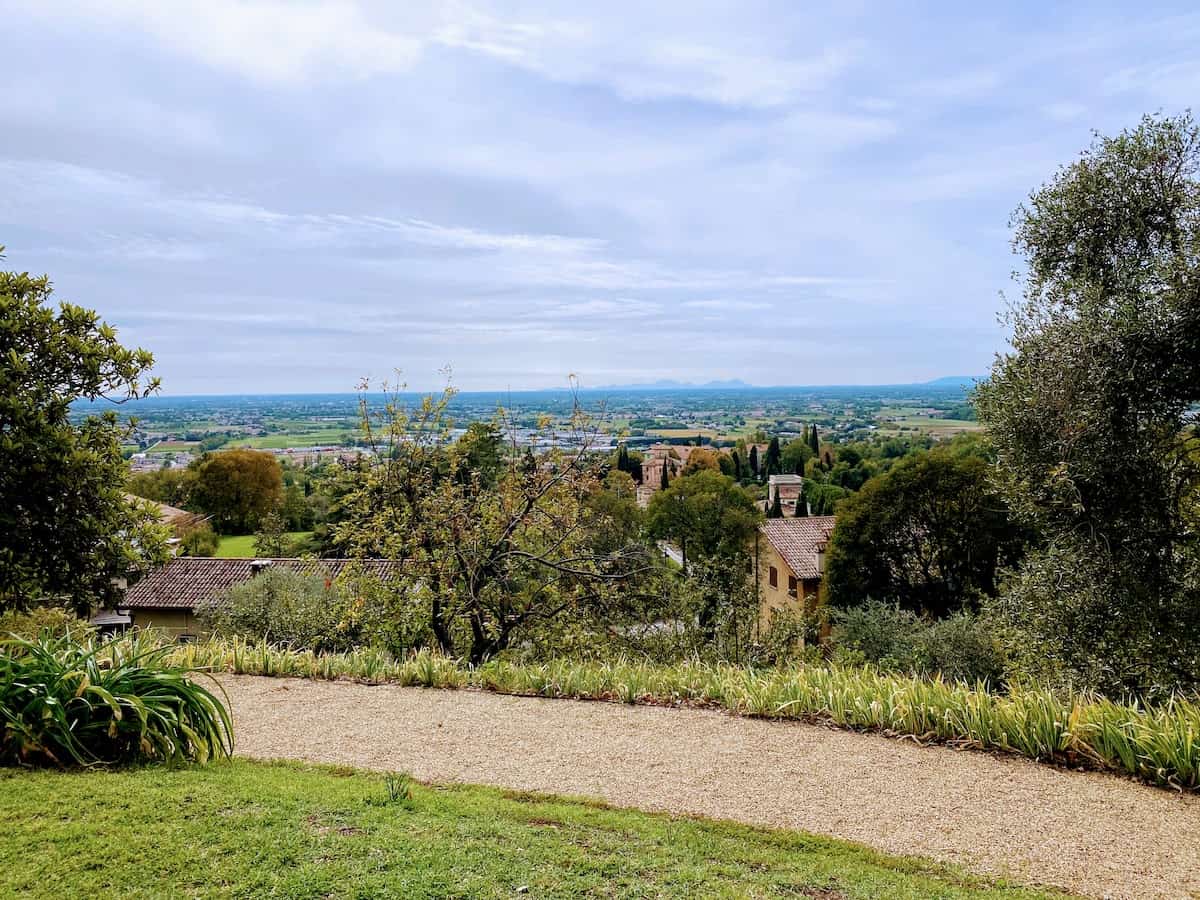
Freya Stark, an English writer, explorer, and photographer, was one of the first women with the moxie to travel to the Middle East and other distant lands across the globe.
Her restored villa in Asolo, Villa Freya, might be considered a living museum now owned by the province. She lived here as a young girl with her mother and sister, and retired there until the time of her death.

Stark’s travels were seminal for the town. The world traveler entertained royalty and other dignitaries here, expanding Asolo’s borders to embrace other people and cultures.
Visitors will especially love the restored garden, which reflects some 2000 years of history, including the remains of a Roman theater dating back to the 2nd century AD.

A guided tour of the park (which offers incredible views of the surrounding Asolan hills) also includes a tour of Asolo.
4- Climb to the top of La Rocca
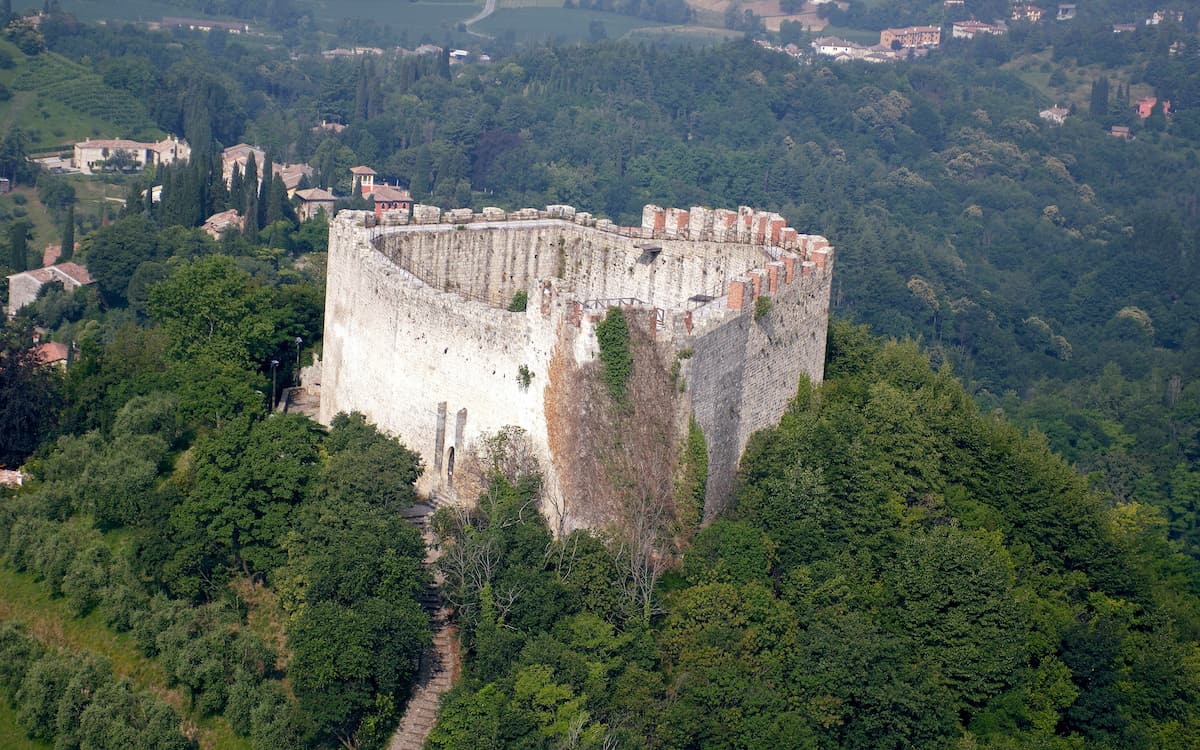
No trip to Asolo, Italy would be complete without a visit to the ruins of its 12th -13th-century medieval fortress, La Rocca. Perched upon the summit of Monte Ricco, it is a reminder of the fortress’s pivotal role in protecting the town.
Depending on one’s fitness and pace, the very steep walk to the top (some 270 steps) takes about 15 minutes, following a path lined with olive trees. The reward for completion is the 360° panoramic views as far as the eye can see.
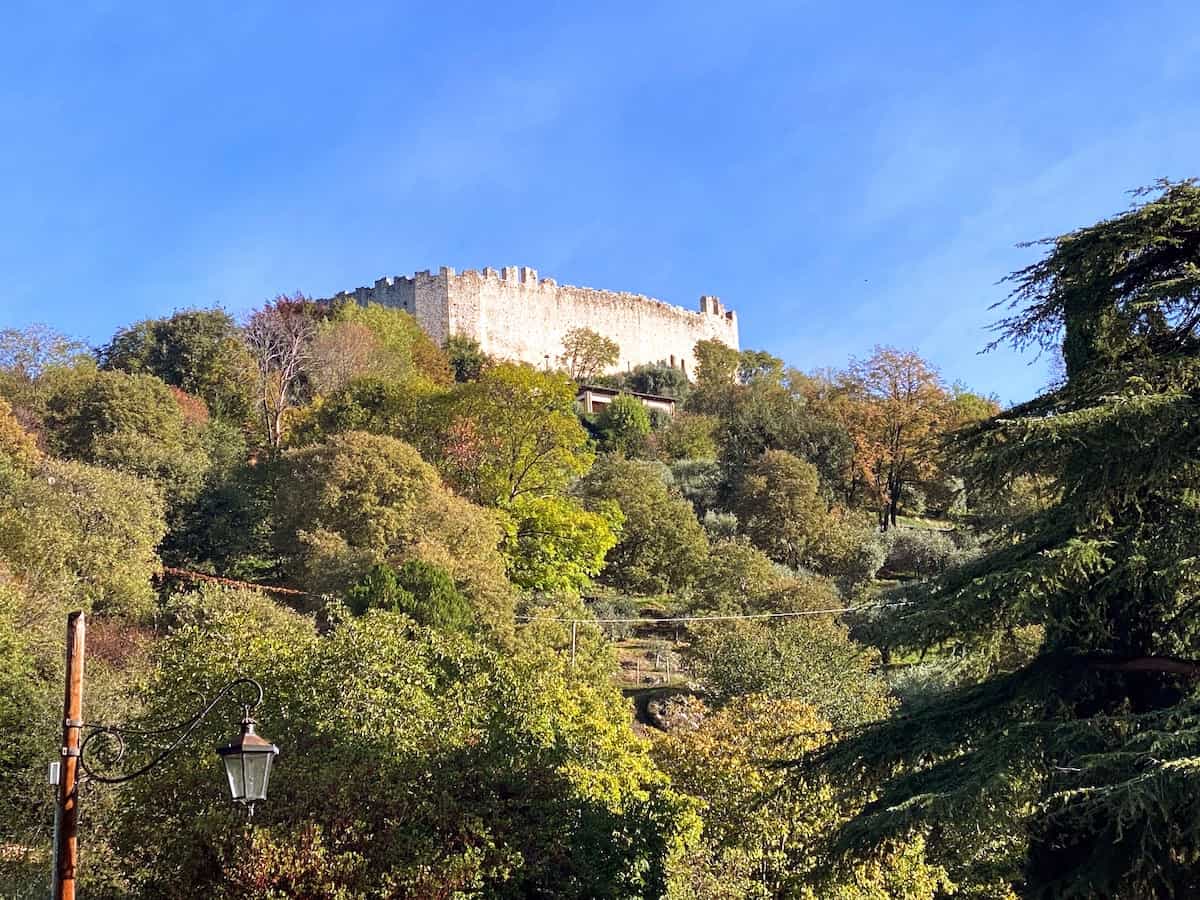
5- Browse the Civic Museum

Head to the Civic Museum of Asolo to learn more about Asolo’s rich local history. Open on weekends, it’s housed in the Bishop’s Palace just off the main piazza (adjacent to the tourist office).
Paintings, archaeological findings, documents and other momentos document the town’s history. The top floor of the three-story museum is dedicated to artifacts of some of Asolo’s most famous citizens, including English poet Robert Browning, explorer Freya Stark, actress Eleonora Duse. and Caterina Cornaro, the Venetian noblewoman who lived in the castle in Asolo.
6- Pay a visit to the main church

The Romanesque-Gothic Duomo di Santa Maria Assunta, the main parish church of Asolo, is located in a small Piazzetta, steps off the main square.
Although it sits on a site where a Roman temple once stood, the facade was restored in 1889. Be sure to look at the impressive altarpiece inside that dates back to 1448.
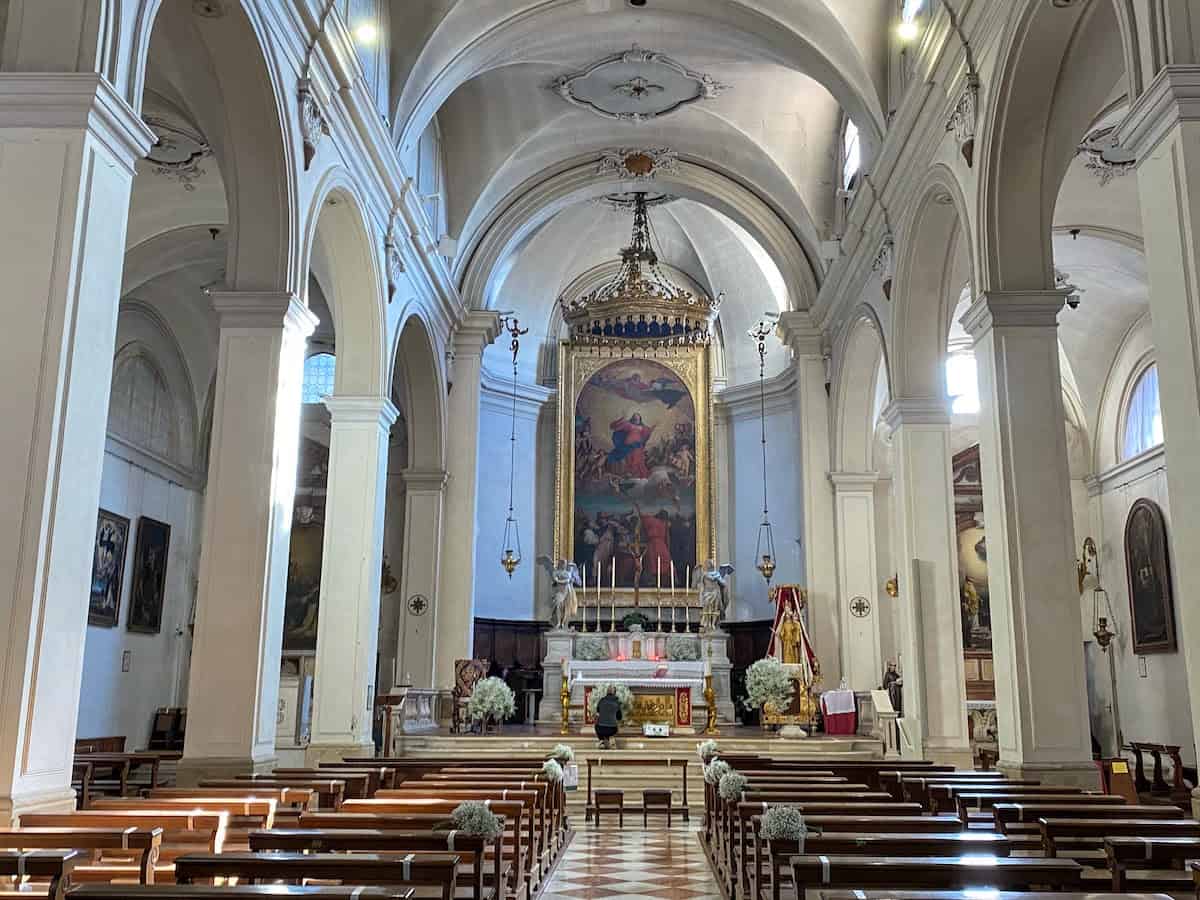
7- Relax at The American Bar
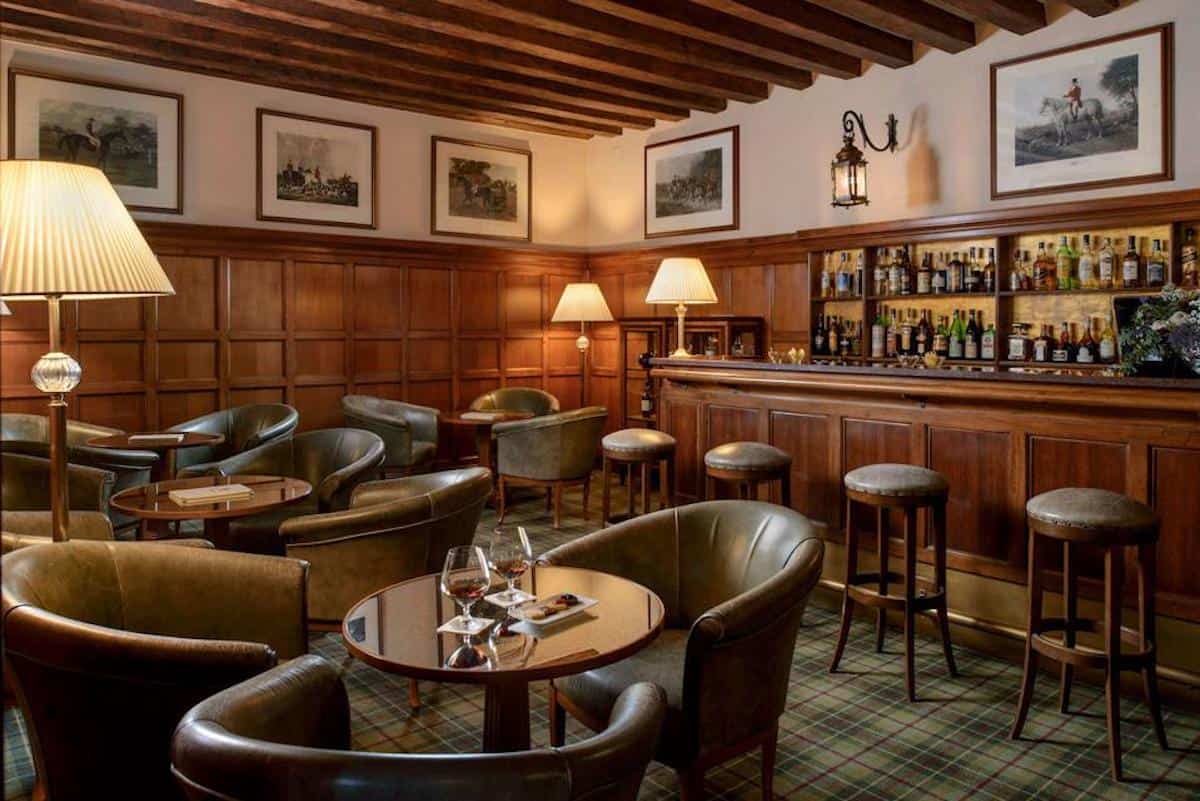
Stopping for a cocktail might be the next best thing to an overnight (or longer) stay at the five-star Hotel Villa Cipriani, a short walk up the hill from the town center. This lovely boutique hotel with just 28 rooms and suites was once the home of Robert Browning.
When it was under the management of the legendary Giuseppe Cipriani, the hotelier created The American Bar to mimic the decor of Harry’s Bar in Venice. The warm, wood-paneled room with comfortable club chairs is the perfect spot for a Bellini or Negroni cocktail.
8 – Dine at Trattoria Moderna Due Mori
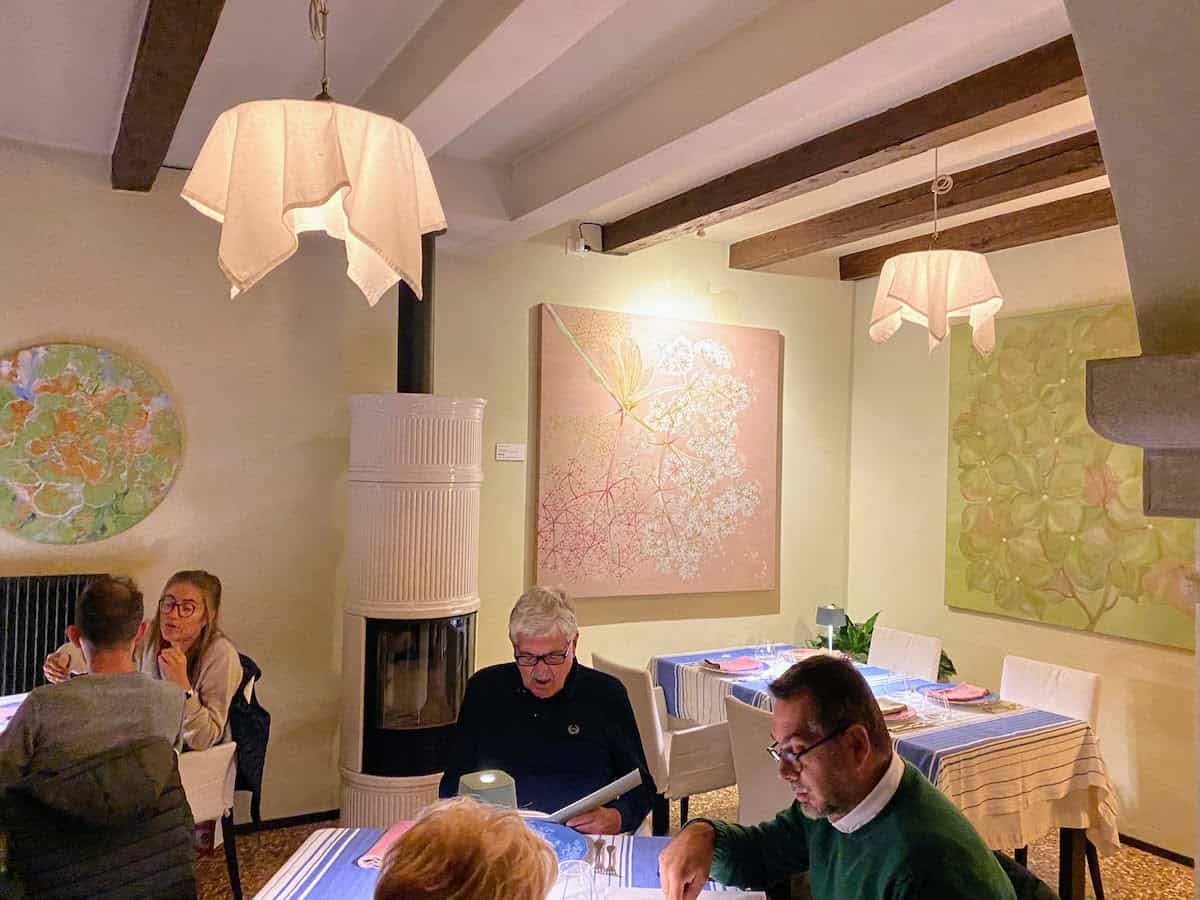
There are a number of excellent fine-dining restaurants in Asolo.
Due Mori is unpretentious, with great food and service, and lovely decor. Small chandeliers look as if they are covered with dinner napkins and the tiny lights on the tables are romantic.
Calling itself a modern trattoria, the Venetian food here is seasonal and local with an inventive flair. The views from the terrace are incredible. Do leave room for the excellent tiramisu.
9- Pay homage to a star of theater
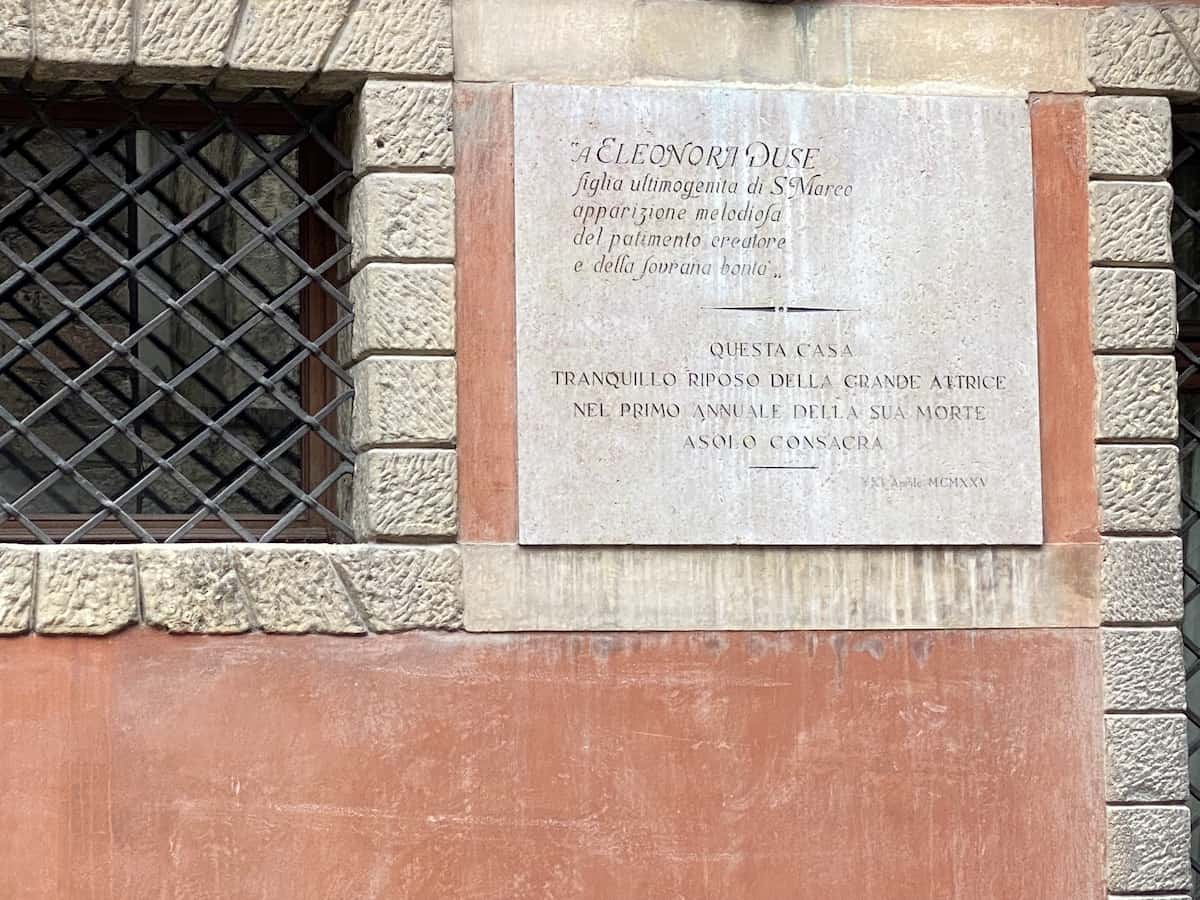
Eleonora Duse was considered the greatest actress of her time. Known internationally, she was the subject of gossip, too, for her torrid love affairs with men and women. She was the first woman and the first Italian to grace the cover of Time Magazine in 1923.
Duse lived in Asolo for the last four years of her life and is buried at the Cimitero di Asolo (another place with incredible views). The Duse Theater in Asolo (first built in 1798 and then rebuilt in 1934) is named after the celebrated actress.
A memorial plaque hangs outside the 16th-century palace where she once lived on Via Cordova. As noted above, an exhibition at the Civic Museum of Asolo also honors the actress with items donated after her death by her daughter.
10 – Capture vistas at the Civic Tower of Asolo
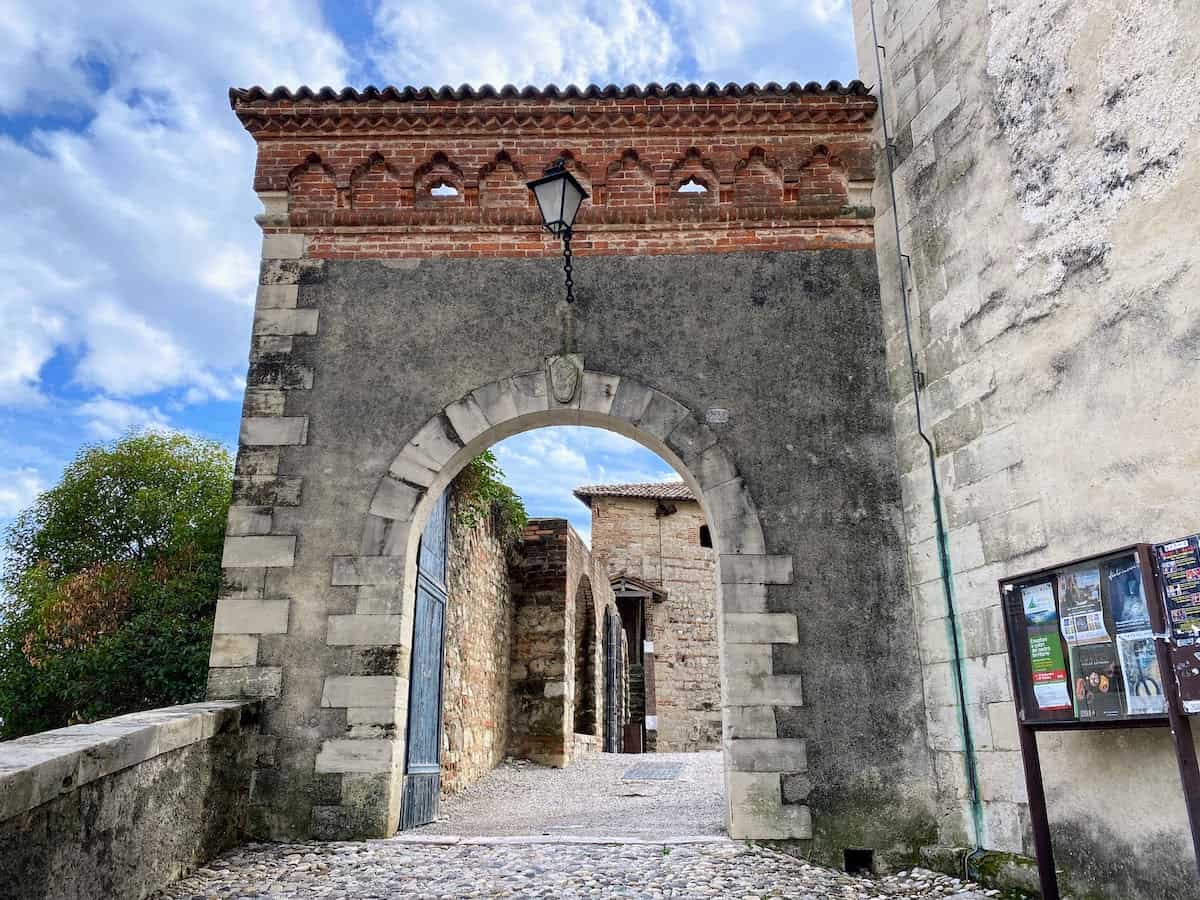
Also known as the Castle of Caterina Cornaro (the Queen of Cyprus, who once lived there), the Civic Tower (Clock Tower) has an interesting history. Built in wood during the 10th century, it was rebuilt in stone a century later, then served as a prison during World War I.

The upper walls (called the belvedere) and top of the tower offer enchanting landscape views of the town and surrounding countryside. It’s a perfect fallback option for those not up to climbing La Rocca. Inside the courtyard is a small restaurant, great for relaxing over a snack and glass of wine.
11- DO NOT overlook Asolo wines: Sparkling with personality
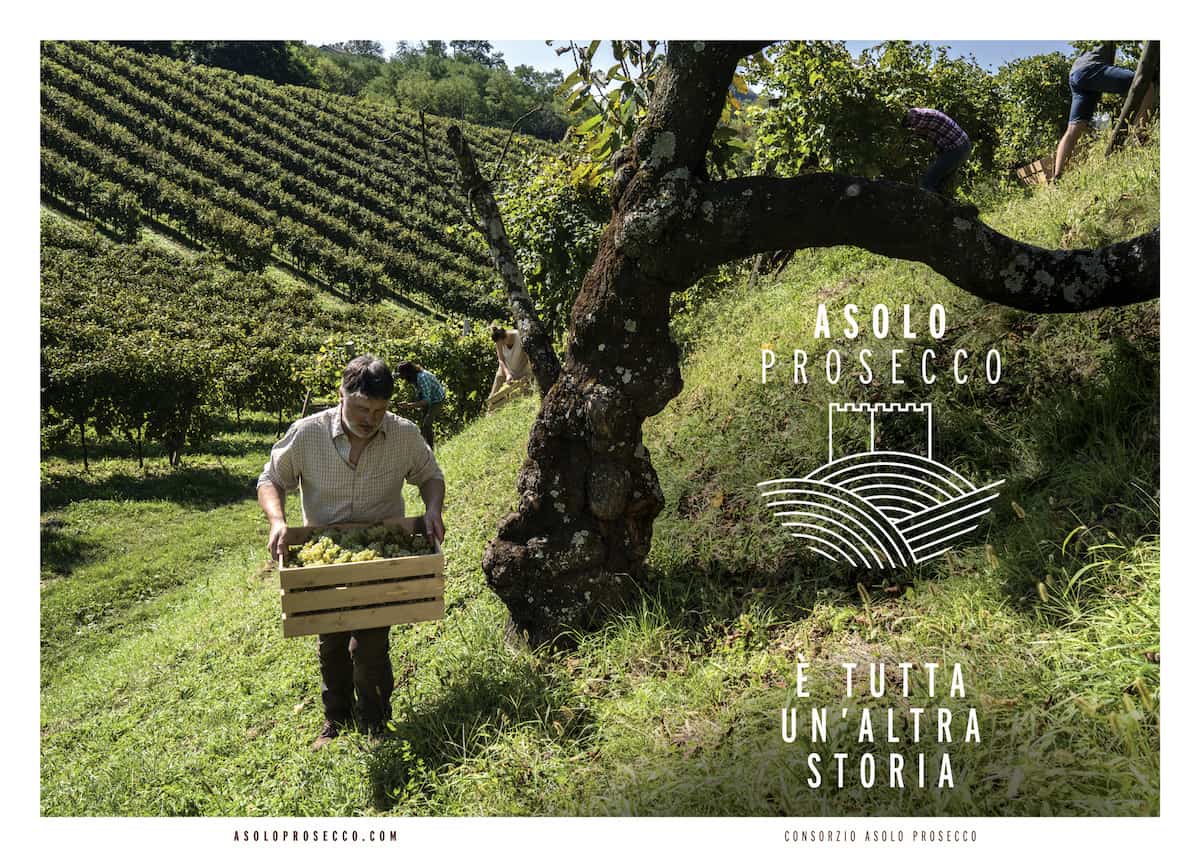
Those who like sparkling wines will find themselves at the epicenter of the lesser-known Asolo Prosecco DOCG area (until 2014, known as Colli Asolani), where these sparkling drinks will awaken the senses.
This nearly 5000-acre, biodiverse wine-growing area lies between flatlands and the Alps, covering seven hills on the right bank of the Piave River at the foot of Monte Grappa. The terroir is characterized by clay soil, numerous streams and rivers, abundant sunshine, and a balanced distribution of rain throughout the year.
All Proseccos, including Asolo, are made with at least 85% Glera grapes. The rest of the blend is made up of no more than 15% of Bianchetta Trevigiana, Perera, Verdiso, Pinot Bianco, Pinot Grigio, Pinot Nero, and/or Chardonnay grapes.
These delicious, pale to bright straw-yellow wines are made using the Charmat method (developed by Italian Federico Martinotti). The economical second fermentation takes place in pressurized steel tanks rather than in individual bottles.
The bouquets of the wine are delicate, with white blossoms and herbs, along with subtle hints of fresh fruits like apples and pears. Because of the clay soil, the tastes tend to have mineral rather than fruity tones. A versatile wine, it can be enjoyed as an aperitivo, throughout a meal, and for special occasions.
Since 1985, the Consorzio Vini Asolo Wines, a group of 400 growers, 44 winemakers, and 37 bottlers, has spearheaded efforts to enhance, protect and promote Asolo Prosecco and Vini del Montello, with an emphasis on sustainability.
An industry publication notes the appellation’s rapid growth in terms of production and popularity. During the 2020 financial year (during the pandemic), it produced a record 19 million bottles, followed by a 25% increase during the first half of 2021.
Compared to other sparklers like Champagne and Franciacorta, Asolo Prosecco couples high quality along with affordability.
Asolo Prosecco obtained DOCG status in 2009, the first denomination of this sparkling white wine from northern Italy to include the Extra Brut category. Montello wines include Montello DOCG, an elegant red from grapes that have been grown in the area for some time, and Montello Asolo DOC red and white wines.
Wine tourism in Asolo
For those interested in wine tourism, the Asolo wine region has more than 90 producers in 18 municipalities in the province of Treviso, both large and small, that provide tastings and vineyard tours. Here are just a few worth checking out:
Wineries in Asolo, Italy Worth Visiting
Giusti Wine
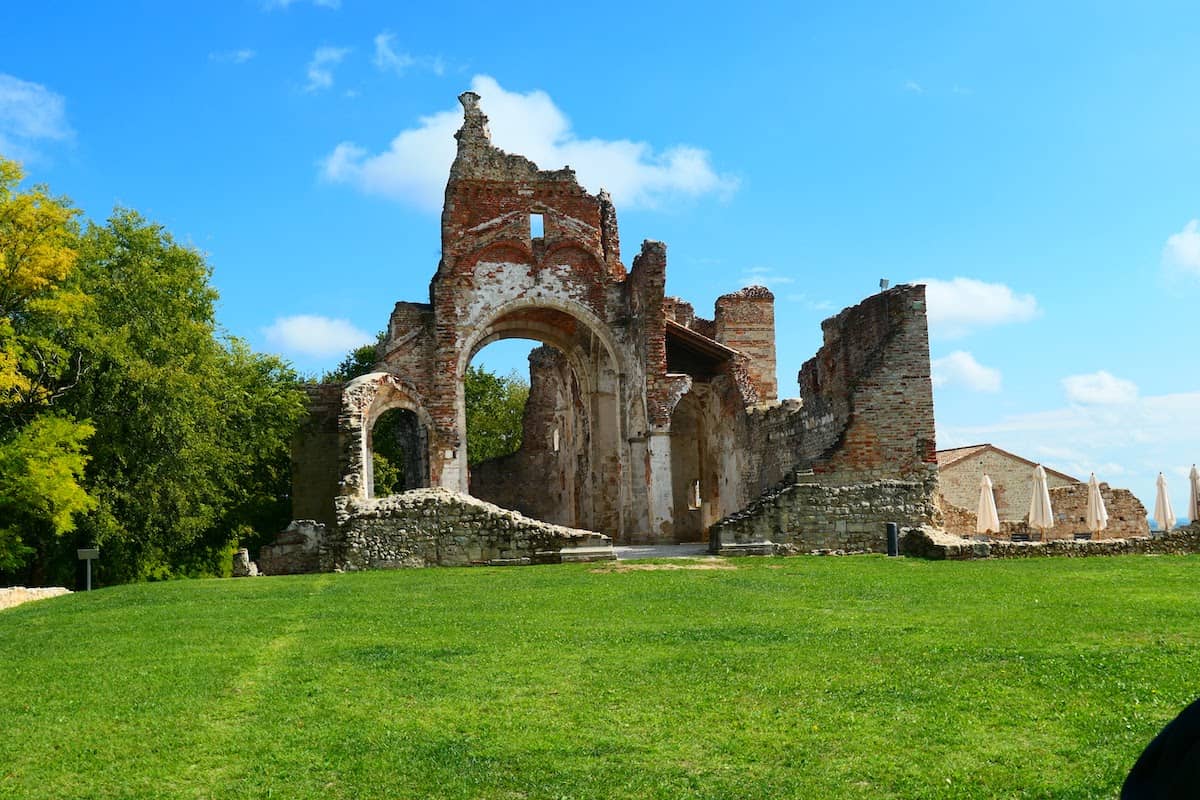
Although Giusti Wine date back to 1600, the newest building at this spectacular winery in Nervesa della Battaglia is thoroughly modern. Open since July 2020, it took five years to build and looks fully integrated into its surroundings—with one of the vineyards covering the roof.
Not only does the winery offer tastings and tours but it also offers lovely accommodations on the historic grounds, which include the partially restored ruins of a 12th-century church and monastery.
Villa Sandi
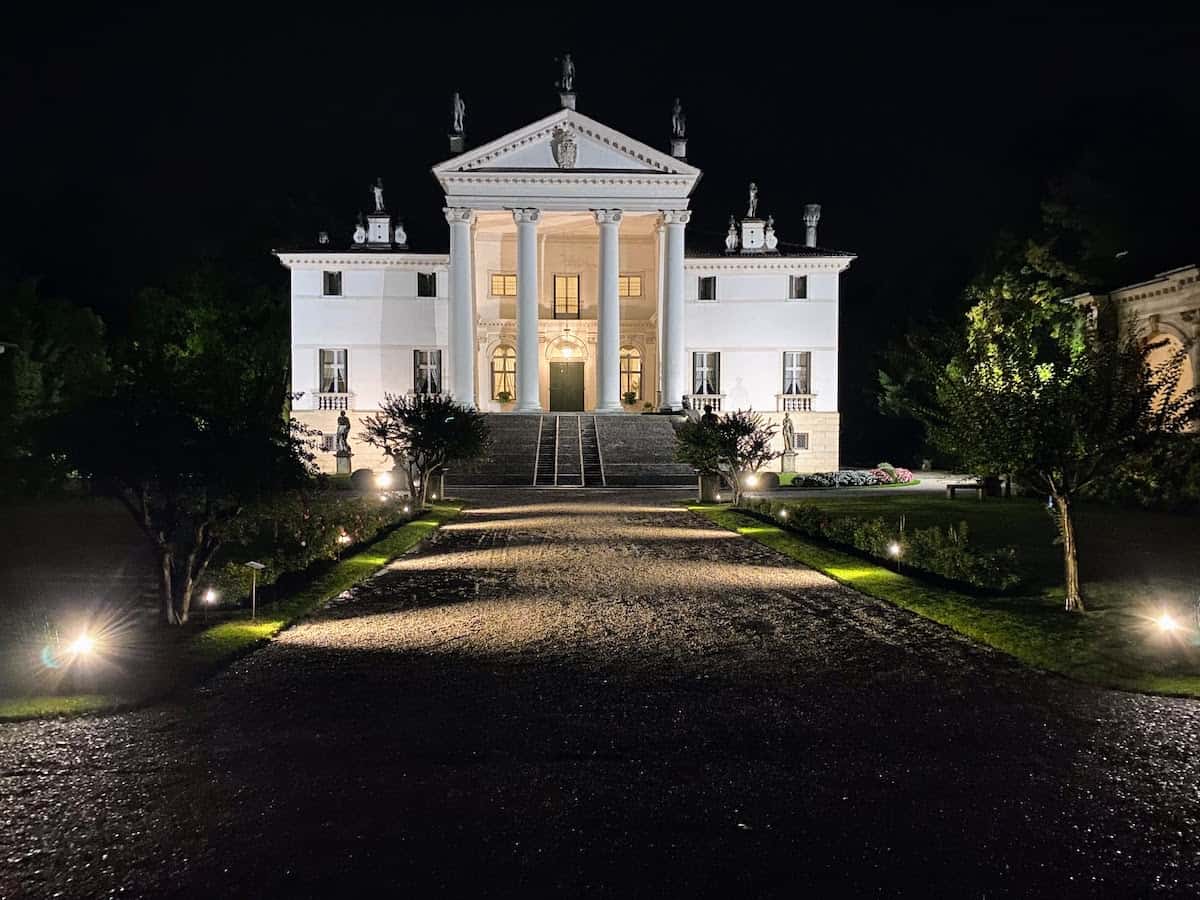
Covering 200 acres of land, family-owned Villa Sandi in Crocetta del Modello is also among the largest producers and exporters in the region.
The winery has been ranked among the 100 best in the world for its beauty. Tours of the historic Palladian villa and cellars used as air-raid shelters in World War II are available by reservation.
Bele Casel
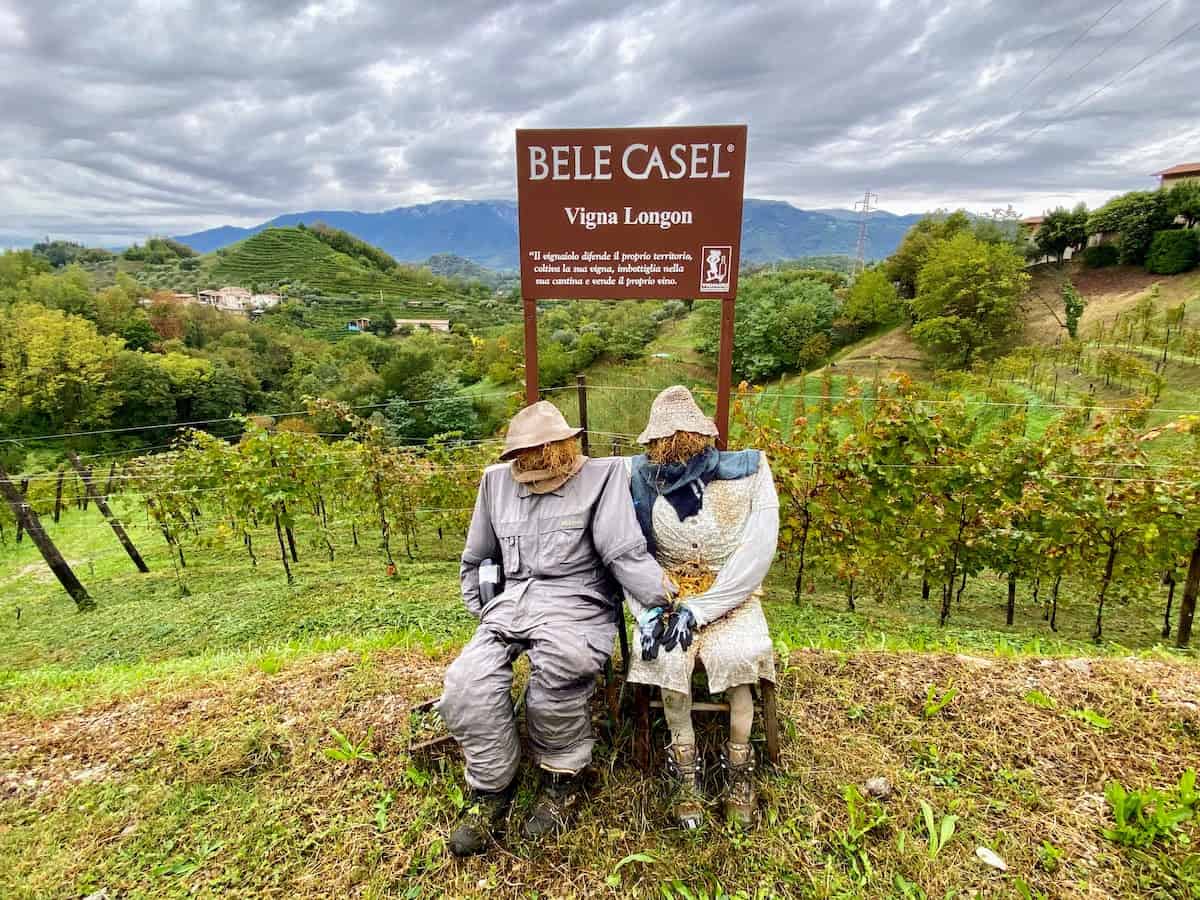
Bele Casel, third-generation winemakers based in Monfumo, exemplify the handful of heroic small producers in the area.
Part of FIVI, the Federation of Independent Wine Producers, its winery visits and tastings offer opportunities to learn about the Martinotti-Charmat method and ColFondo sparkling wine that is aged on the lees.
Bresolin
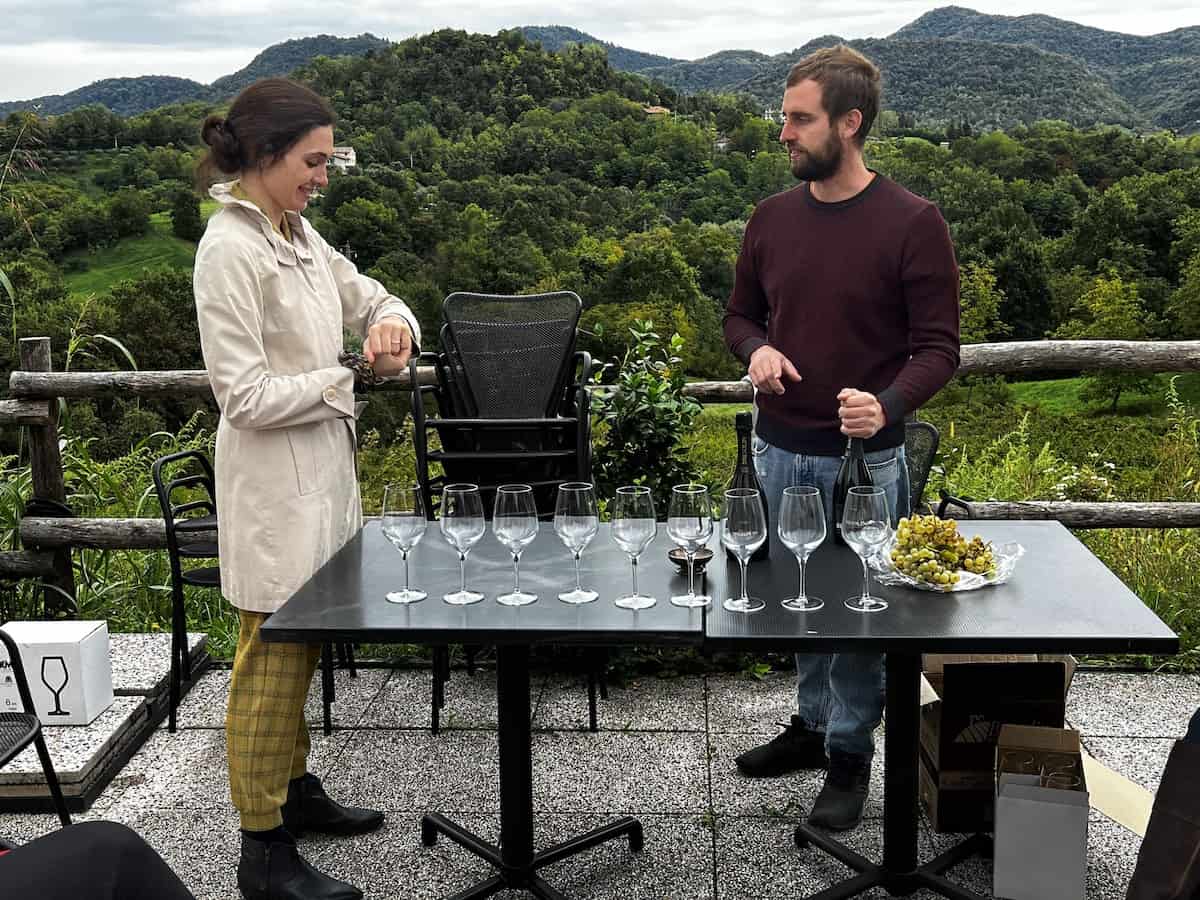
Bresolin is a small family-owned, organic winery with a scenic location in the Asolan Hills in Crespignaga di Maser.
Owned and operated by three brothers, they produce excellent olive oil and welcome visitors for wine tastings.
Why make the trip from Venice to Asolo?
Asolo is quite small (less than 10 square miles in area) with a population of some 10,000 residents. Its curved and winding streets are far less touristed and the pace far slower than nearby Venice’s bustling piazzas and canals.
Unvarnished by the mass tourism that has plagued Venice, Asolo offers an authentic soulfulness and romantic ambiance that will beg you to linger.
When are the best times of year to visit Asolo?
The climate in Asolo is generally temperate but with a fair amount of rain and clouds. So In terms of taking advantage of the stunning vistas, the best time to visit is between July and September.
All photo credits: Jerome and Irene S. Levine
IF YOU GO
In terms of location, Asolo is about 20 miles from the city of Treviso, the capital of the Treviso province, and about 90 miles from Verona (another province in the Veneto region).
For further information: Asolo Tourist Information Site
Save to Pinterest!!
